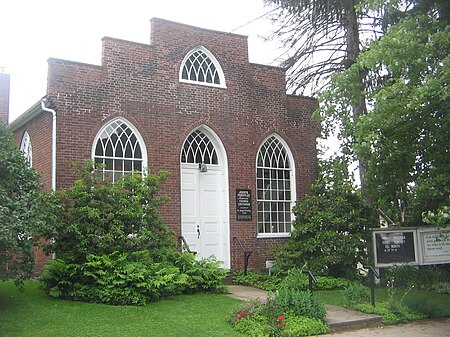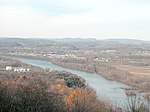Northumberland Historic District
Historic districts on the National Register of Historic Places in PennsylvaniaItalianate architecture in PennsylvaniaNRHP infobox with nocatNational Register of Historic Places in Northumberland County, PennsylvaniaQueen Anne architecture in Pennsylvania ... and 2 more
Tourist attractions in Northumberland County, PennsylvaniaUse mdy dates from August 2023

The Northumberland Historic District is a historic district listed in the US government's National Register of Historic Places in 1988. The "gem" of the district is a National Historic Landmark, the Joseph Priestley House. It includes one other separately Registered Historic Place, the Dr. Joseph Priestley House, also known as the "Priestley-Forsyth Memorial Library". It is bordered roughly by 4th Street, A Street, N. Shore Railroad, and Wheatley Avenue in Northumberland, Pennsylvania.In 1988 there were more than 100 contributing structures and 73 non-contributing structures in the district.
Excerpt from the Wikipedia article Northumberland Historic District (License: CC BY-SA 3.0, Authors, Images).Northumberland Historic District
Sheetz Avenue,
Geographical coordinates (GPS) Address Nearby Places Show on map
Geographical coordinates (GPS)
| Latitude | Longitude |
|---|---|
| N 40.890555555556 ° | E -76.794166666667 ° |
Address
Sheetz Avenue 227
17857
Pennsylvania, United States
Open on Google Maps






